Where do Polish AI researchers publish their papers?
The report “AI researchers and their publications” looks at data concerning publications on artificial intelligence, broken down by disciplines, research centres, or the quality of the journal in which the scientific paper was published.
- The first part of the report presents the results of searches of the Polish Scientific Bibliography (PSB) contents for publications by researchers representing all disciplines of science using a list of keywords. More information can be accessed here.
- In the second part of the report, the analysis is narrowed down to the group of researchers representing computer and information sciences under natural sciences, and information and communication technology. More information can be accessed here.
- This part of the report concerns statistics based on the PSB searches for articles on AI published in high-profile IT journals. More information can be accessed here.
- The fourth part of the report presents the relevant maps, a ranking of research centres and their publication strategies. More information can be accessed here.
FULL TEXT OF THE REPORT in pdf format can be accessed HERE(please note: due to the mode of data presentation, this version is slightly different than the Internet version, where the last two chapters have been merged into one).
AI researchers and their publications in high-profile journals
Data on AI researchers and their publication record was gathered on the basis of a list of high-profile journals linked to computer and information sciences published on the Guide2Research webpage.
Any data on researchers and their publications is derived from the Polish Scientific Bibliography.
In the period 2013-2018, there was a total of 1679 scientific articles on: machine learning, data mining and artificial intelligence; image processing and computer vision, and human computer interaction registered in the Polish Scientific Bibliography.
That set of papers was written by 1,229 authors in total.
As many as 68% of those publications were prepared under two disciplines of science: computer and information sciences and information and communication technology.
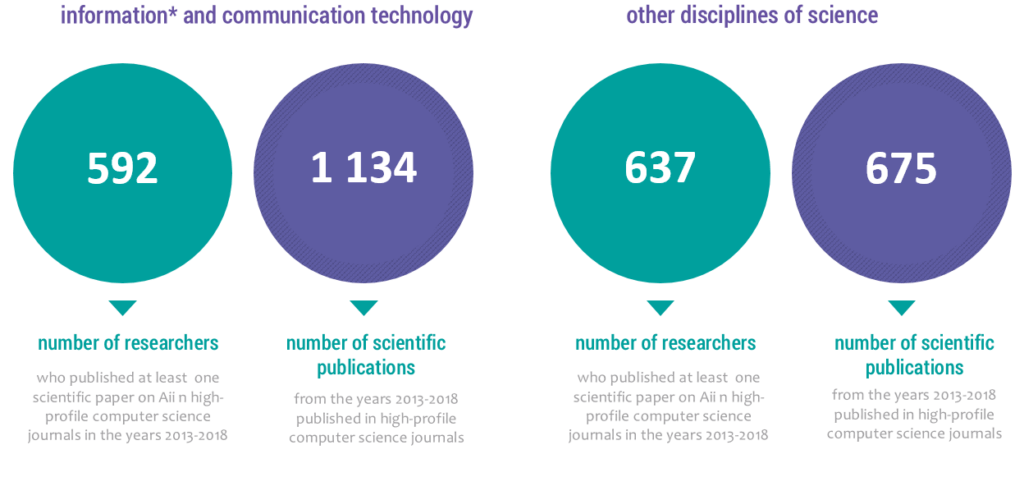
List of researchers and scientific articles published by them in the period 2013-2018 in high-profile computer and information science journals related to AI
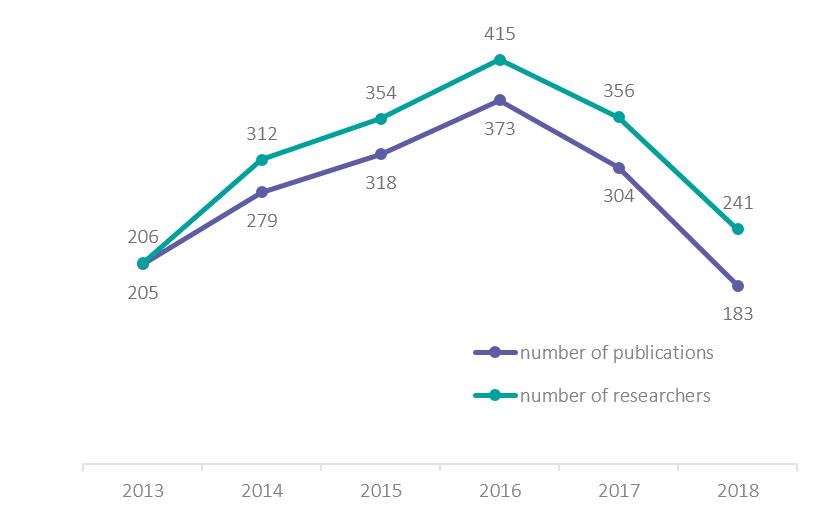
Rate of co-authorship and interdisciplinarity of scientific articles published between 2013 and 2018 in high-profile computer and information science journals related to AI
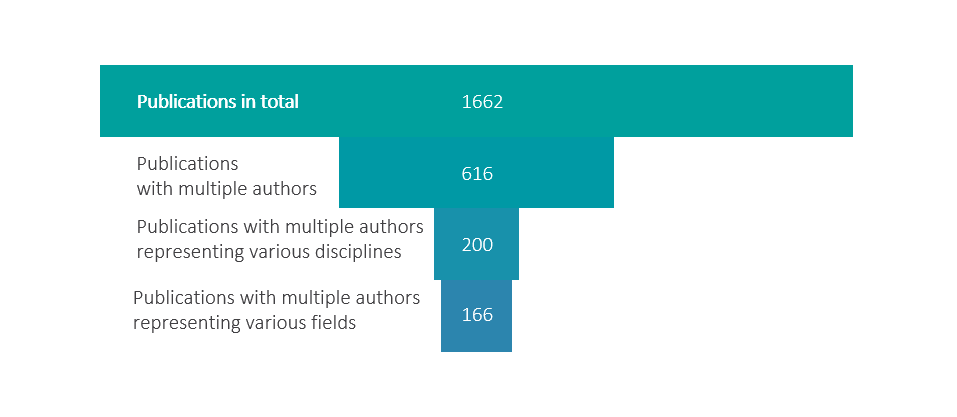
The number of researchers and scientific articles they published in high-profile journals in the period 2013-2016 was growing steadily and then decreased in 2017. Data for 2018 are for illustrative purposes only as they are still being entered into the PSB.
The majority of those articles (63%) have one author, while one in ten is a result of scientific collaboration of researchers from various fields of science.
Number of researchers who published at least one scientific article in a high-profile computer and information science journal related to AI in the period 2013-2018, by fields of science

The majority of researchers who published at least one scientific journal in a high-profile computer and information science journal related to AI indicated engineering and technology as their main field of science, including mostly information and communication technology (472 researchers) and automation, electronic and electrical engineering (100 researchers). They are followed by representatives of natural sciences: mathematicians (72 researchers) and computer and information scientists (58 researchers).
Eleven percent of all authors indicated social sciences, medical and health sciences, agricultural sciences, humanities and the arts as their main field of science.
Number of researchers who published one, two or at least three scientific articles in high-profile computer and information science journals related to IA in the period 2013-2018
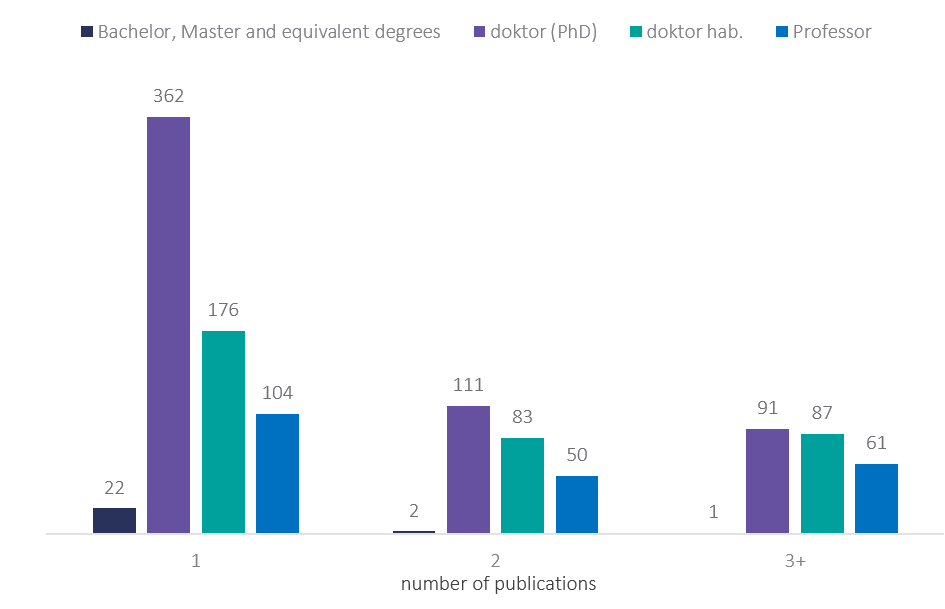
The AI experts who publish the outcomes of their research in high-profile computer and information science journals are mostly PhD holders (doktor – 49% of the authors), followed by holders of the degree of doktor habilitowany (30%) and professors (19%).
It should be noted that 21% of all the authors published at least three scientific articles of that type in the analysed period.
Number of researchers who published at least one scientific article in a high-profile computer and information science journal related to IA in the period 2013-2018, by year of birth
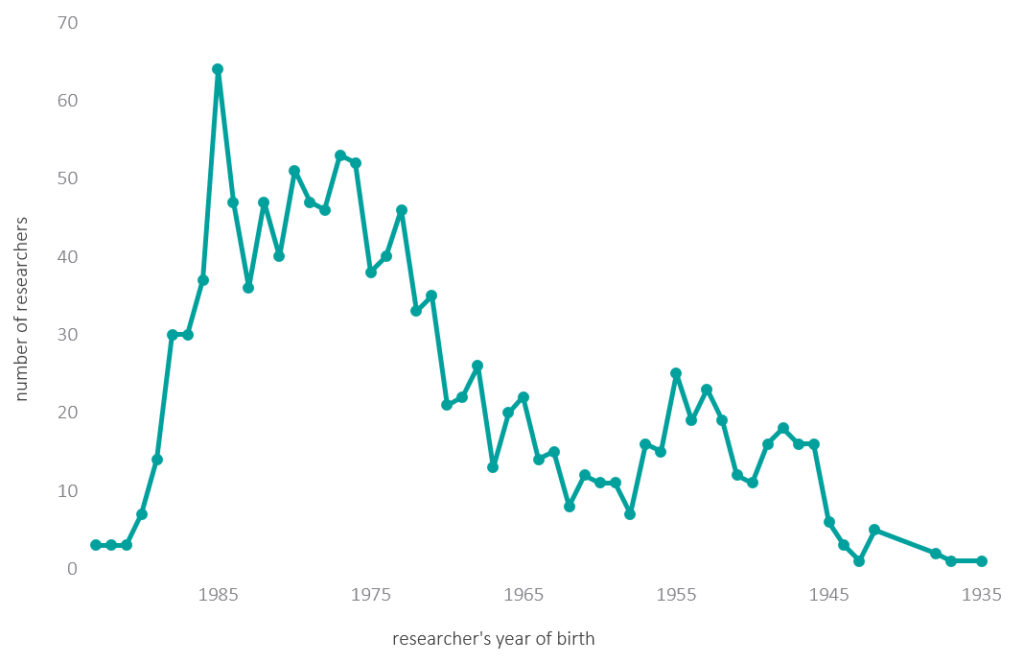
The most numerous group of experts who publish their papers in high-profile journals related to IA are researchers in their forties and thirties (411 and 396 people, respectively).
The number of researchers over 50 is similar (406 people).
Ranking of research centres with the highest number of researchers who published at least one scientific article in a high-profile journal linked to AI in the period 2013-2018
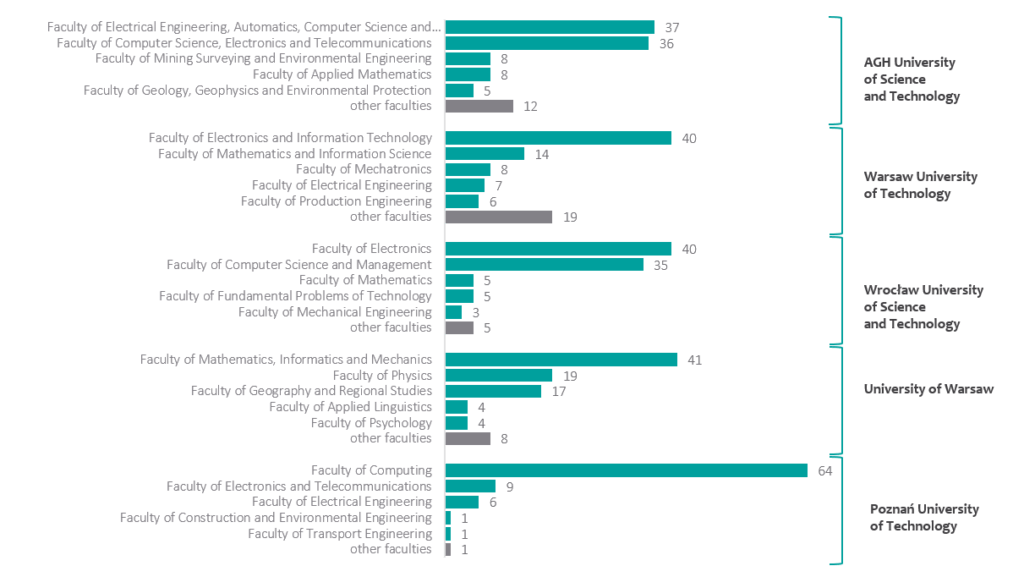
The outcomes of scientific work were published in computer and information science journals mostly by researchers employed at five public universities: AGH University of Science and Technology, Warsaw University of Technology, Wrocław University of Science and Technology, University of Warsaw, and Poznań University of Technology. The majority of authors affiliated their publications to computer and information science departments, and only a small group of them – to social science and humanities departments.
Below you can find a ranking of 20 research centres with the highest number of publications in high-profile journals. It should be noted that the rate of authorship or co-authorship for one researcher is particularly high at the Systems Research Institute of the Polish Academy of Sciences (6.93) and Częstochowa University of Technology (3.33).
Ranking of research centres with the highest number of scientific articles published in top computer and information science journals related to AI in the period 2013-2018
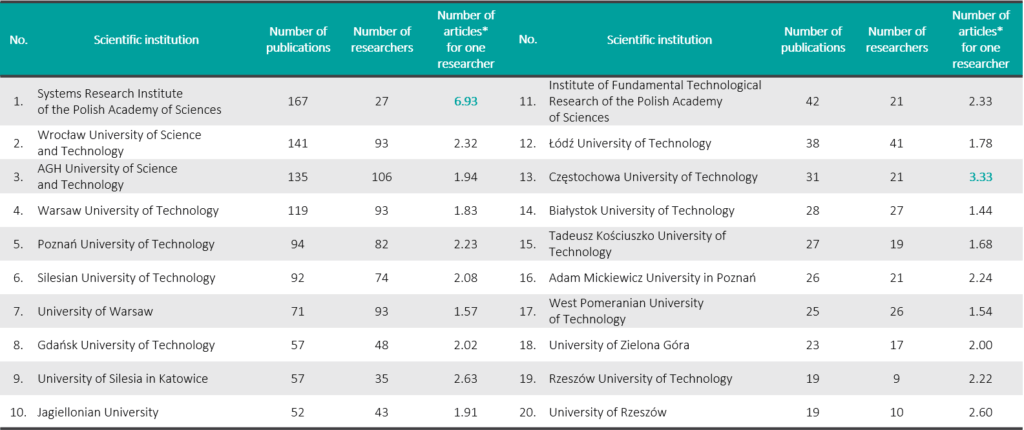
Methodological appendices
Appendix 1
Method of selecting keywords for the analysis of data from the Polish Scientific Bibliography
The selection of AI publications and researchers was made using machine methods (automatic search of databases), based on a list of keywords. It was assumed that this would allow to identify research papers on AI methods, applications and social aspects of the development of new technologies, presenting either a narrow (technical) or a broad picture of artificial intelligence.
The list of keywords was developed in a four-step-process. First, a broad set of keywords was compiled on the basis of the literature on the subject. Next, it was verified by experts: practitioners and researchers specialising in the area of AI (six people in total). At this stage, we eliminated the words which wrongly identify AI papers or are not unique to AI publications. The experts also had the opportunity to present their own keyword proposal. The list developed in this way included 294 terms in English.
At the next stage, the list of words in English was translated into Polish. The translated list included all possible translation options, which means that there were eventually more keywords in Polish than in English. The applied search technology enabled us to identify papers on the basis of singular, plural and declined words from the list.
At the final stage, after searching for publications in the PSB, a sample of titles and abstracts was selected in order to finally verify the effectiveness of the selected keywords in the identification of publications on AI. At this stage, a total of 29 phrases were eliminated from the set as they were too ambiguous to precisely identify papers concerning AI. Moreover, four phrases (emotion recognition, expression recognition, object recognition, pattern recognition) were removed from the list of keywords only for certain disciplines of science (e.g. psychology, linguistics, medical sciences) where the phrases are used in a different context. The verification of the list of keywords therefore allowed for the removal of excessively broad concepts that are not an exclusive distinguishing feature of artificial intelligence (e.g. clustering, casualty, Python, smart devices). Selected terms, however, are so broad in their meaning that they also identify narrower phrases (e.g. the term “convolutional neural network” identifies “neural network”).
Statistics prepared with the use of such a list of keywords are a good approximation of real-world values. The developed list can be extended in the future to include new keywords and other foreign languages. It can also be consulted with a different pool of experts.
Key sources for the identification of the keyword lists:
-
Association
for the Advancement of Artificial Intelligence,
AITopics
https://aitopics.org/search -
China
Institute for Science and Technology Policy at Tsinghua University
(2018) China AI
Development
http://www.sppm.tsinghua.edu.cn/eWebEditor/UploadFile/Executive_susmmary_China_AI_Report_2018.pdf -
Corea F.
(2018) AI Knowledge Map: How To Classify AI
Technologies
https://www.forbes.com/sites/cognitiveworld/2018/08/22/ai-knowledge-map-how-to-classify-ai-technologies/#35a4feaf7773 -
Glossary of
artificial
intelligence
https://en.wikipedia.org/wiki/Glossary_of_artificial_intelligence -
Goodfellow I.
et. al. (2019) Deep
Learning
https://github.com/janishar/mit-deep-learning-book-pdf/blob/master/complete-book-pdf/deeplearningbook.pdf.
Appendix 2
Method of selecting top computer and information science journals on AI to analyse data from the Polish Scientific Bibliography
The set of IA publications in computer and information science journals to be analysed was determined on the basis of a list of Top Journals for Computer Science and Electronics published by Guide2Research.com. The webpage gathers data on research and international scientific conferences. In the tab “Top 600 Journals”, a list of international journals with impact factor is presented, divided by thematic areas under computer and information sciences.
For the purposes of the analysis, the following lists were used:
- 111 journals from the area of machine learning, data mining and artificial intelligence,
- 57 journals from the area of image processing and computer vision,
- 28 journals from the area of human computer interaction.
The analysis takes into account all journals from the above lists in which scientists reporting their research achievements to the Polish Scientific Bibliography system published their articles. It should be noted that those journals are included in the list of ranked journals of the Polish Ministry of Science and Higher Education in the so-called A list.
Source for the list of top computer and information science journals on AI:
Please send any questions regarding this study to: labstat@opi.org.pl